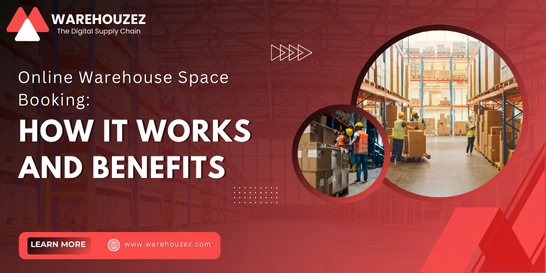The Definitive Guide to Choosing the Right Warehouse Layout for Your Business
The Definitive Guide to Choosing the Right Warehouse Layout for Your Business
When it comes to running a successful business, choosing the perfect warehouse layout is absolutely important. A well-planned and organized warehouse can significantly impact the productivity, profitability, and overall success of your operations. On the other hand, a poorly planned layout can result in inefficiencies, delays, and unnecessary costs. The best warehouse layout design depends on the specific requirements of the business, but any well-built facility will maximize space, prioritize safety, and improve productivity. From selecting the right storage systems to optimizing workflow and maximizing space utilization, there are numerous factors to consider when designing or revamping your warehouse layout.
In this particular blog post, we will explore the key considerations and best practices to help you choose the right warehouse layout for your business. Whether you are starting from scratch or looking to improve your existing layout, this definitive guide will provide you with the knowledge and insights to make informed decisions that will optimize your warehousing operations and drive growth. So let's dive in!
Understanding What is a Warehouse Layout
A warehouse layout refers to the arrangement and organization of a physical space that is designated for storing products, goods, and inventory. It involves the strategic placement of storage areas, aisles, equipment, and other necessary components within the warehousing facility to optimize efficiency and productivity. A well-designed layout ensures a smooth flow of materials, minimizes travel time and distance, maximizes space utilization, and improves overall operational processes. The layout can vary depending on the specific needs and requirements of the products being stored and the operations being carried out within the warehouse.
Importance of Warehouse Layout
There's no denying the fact that well-planned warehouse layout design plays a crucial role in ensuring efficient and smooth operations, optimizing space utilization, and enhancing overall productivity in a warehouse setting. The significance of an optimized layout cannot be understated, as it directly impacts factors such as material flow, order picking efficiency, and inventory accuracy, ultimately influencing a company's competitiveness and success in today's fast-paced business landscape.
Main Components of a Warehouse
Generally, a warehouse has several important components that are crucial for managing the flow of goods within the facility and ensuring efficient and effective operations. The arrangement and positioning of these elements ultimately define the success of a warehouse.
Here are the most significant components to consider while planning and organizing the warehouse layout:
1. Receiving Area: The receiving area is where goods and materials are initially received into the warehousing facility. It may include loading bays for trucks, conveyor systems, and technology for tracking and sorting incoming inventory.
2. Storage Area: This is where the majority of inventory is stored within the storage facility. It can involve various types of racking systems, shelves, bins, and pallets to accommodate different types of products and optimize space utilization.
3. Packing Area: The packing area is where items are prepared for distribution or shipping process. It typically includes packaging materials, tools, and workstations for workers to efficiently box, wrap, label, and secure products.
4. Shipping Area: This area is meant for the shipping process. It includes shipping docks, loading bays, and equipment for loading goods onto trucks or other transportation vehicles. It may also involve order verification processes and documentation.
5. Service Area: In some warehouses, there may be a designated area for additional services such as assembly, customization, or repair. This area may have specialized tools, equipment, and personnel to handle specific customer requests or value-added services.
Considerations for Warehouse Layout Optimization
There are several considerations that businesses should keep in mind while selecting the most optimized layouts for their warehouses. A few things to consider include the type of goods being stored, the flow of materials, the frequency of movement, and the safety and accessibility of employees and warehouse equipment.
Here's a breakdown of the most important considerations for warehouse layout optimization:
1. Budget and Cost-Efficiency
Designing a warehouse layout that is cost-effective is crucial for any business. It is important to consider the available budget and find ways to optimize the space to maximize storage capacity and operational efficiency. This can include utilizing vertical space through mezzanines or selecting appropriate storage systems like pallet racking or shelving that fit the budget and storage requirements.
2. Optimal Space Utilization
One of the key considerations for optimizing the warehousing space is to maximize the use of the available space. This involves efficient positioning of racks, shelving units, and equipment to ensure that the entire warehouse space is utilized effectively. By utilizing the available space optimally, it becomes easier to organize and locate goods, minimize inventory damage, and improve overall operational efficiency.
3. Safety and Regulations Compliance
Without a doubt, the perfect layout should prioritize the safety of workers and compliance with safety regulations. This involves maintaining clear and well-marked walkways, emergency exits, fire safety equipment, and other safety measures. By taking safety into account during the design process, the risk of accidents, injuries, and property damage can be significantly reduced.
Three Types of Warehouse Layout Designs
Primarily, businesses use one of three popular design styles: U-shaped, I-shaped, or L-shaped, all of which have the potential to improve operational efficiencies. The optimal choice is determined by the available space and the specific workflow requirements of the business.
Let's understand more about each of these three types of warehouse layout designs:
1. U-Shaped
In a U-shaped warehousing design, the storage and operational areas form a U-shape. U-shaped layouts are particularly beneficial for warehouses with a high volume of inbound and outbound goods, as they facilitate streamlined operations and quick turnaround times. It ensures a clear separation between incoming and outgoing material flows, reducing the chances of errors or mix-ups.
2. I-Shaped
The I-shaped design consists of a long and straight storage area with receiving and shipping areas located at opposite ends. This design is suitable for warehouses with a linear flow of goods, where products move from one end to the other in a sequential process.
3. L-Shaped
The L-shaped warehouse design allows for clear separation of different areas within the warehouse. The layout allocates specific sections for receiving, storage, packing, and dispatching, effectively organizing the different functions and optimizing operations. It provides clear and direct pathways for trucks, forklifts, and workers, ensuring a smooth and efficient workflow.
Best Practices, Tips, and Strategies for Warehouse Layout Optimization
Let's go through some of the best practices, tips, and strategies for warehouse layout optimization:
1. Start with a Comprehensive Analysis
Before optimizing your warehouse layout, conduct a detailed analysis of your business operations, including inventory levels, order volumes, product types, and material handling equipment. This will help you identify areas that need improvement and guide you in designing an efficient layout.
2. Optimize Space Utilization
One of the key objectives of warehouse layout optimization is maximizing space utilization. Implementing vertical storage systems such as mezzanines, pallet racks, or automated storage and retrieval systems (AS/RS) can help make the most of your available space.
3. Proper Product Placement
Organize your warehousing facility in a way that minimizes unnecessary travel time and distance for workers. Place frequently picked items closer to the shipping dock or assembly areas for easy access. Utilize ABC analysis to categorize products based on their popularity or demand and integrate this information into your layout design.
4. Embrace Automation Technologies
Technologies like Warehouse Management Systems (WMS) can help streamline operations by automating tasks such as inventory management, order processing, and tracking. Embrace these technologies to reduce manual errors and improve overall efficiency.
Wrapping Up
To wrap things up, choosing the right warehouse layout is a crucial decision that can have a significant impact on the efficiency and productivity of your business operations. By considering factors such as storage capacity, inventory flow, equipment needs, and future growth plans, you can make an informed decision that meets your business's unique requirements. The process may be complex, but with careful planning and analysis, you can create a warehouse layout that maximizes space, minimizes costs, and enhances overall organizational success. Remember, updating and re-evaluating your warehouse layout periodically is essential to keeping up with changing business needs and evolving industry trends. By staying adaptable and proactive, you can ensure that your warehouse remains a competitive advantage for your business in the long run.



